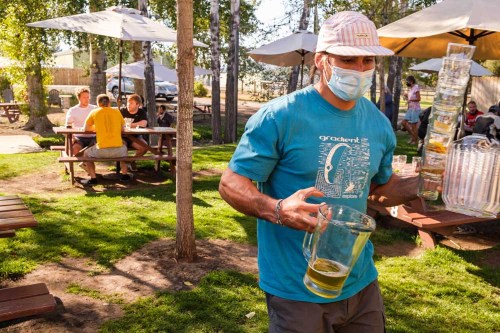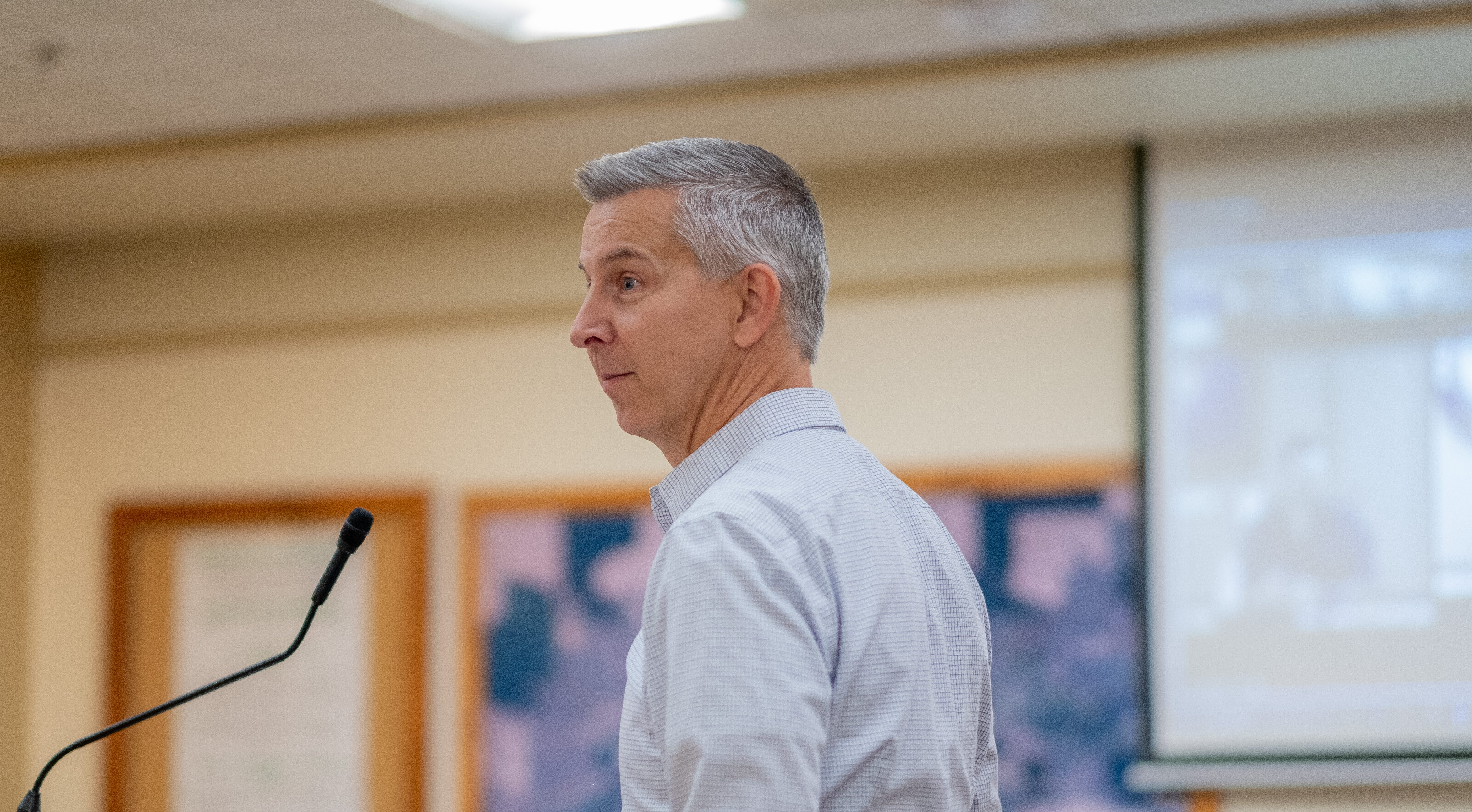Where are the workers: Shortage of employees leads to altered business models
Published 7:00 am Sunday, September 12, 2021

- Alonso Mendoza, a server at Terminal Gravity Brewing, Enterprise, clears a table and returns empty glasses during pre-dinner rush Sept. 2, 2021.
LA GRANDE — Enterprise isn’t the largest town in Eastern Oregon, with a population of 2,052. But it’s just a few miles from the ever popular town of Joseph and its vistas across Wallowa Lake to the peaks of the Eagle Cap Wilderness.
In a normal summer, the town’s Terminal Gravity Brewing would be busy all days of the week serving local, handcrafted beers to patrons and traditional brewpub fare. But due to a labor shortage this summer the company had to cut hours during its lunch rush, and close altogether on Tuesdays.
Trending
Natalie Millar, chief executive officer of the Wallowa County brewery, said it’s an inevitability it will have to close for even more days as their skeleton crew of cooks, servers and hostesses return to school — high school, to be exact.
“Heading into fall it is looking like we’re going to have to cut an additional day and probably cut lunches,” Millar said. “It is pretty brutal.”
Demand for restaurant meals soared over the summer as restrictions lifted across Oregon. Nearly all restaurants saw a huge uptick in customers. But where demand reached new heights, a new challenge appeared — staffing the restaurants which have balanced narrow margins and threats of closure over 2020.
To keep employees from burning out, Millar cut operating hours and closed down the brewery on Tuesdays to keep what employees she has from becoming overwhelmed in an industry well known for its high turnover rate and low wages.
“I think we’ve reached the mindset of ‘we have what we have,’ ” she said. “We’ll keep hiring as much as possible, but we need to understand that we’ve got to adjust with what the situation is instead of waiting for the situation to adjust itself.”
Not much change
Trending
Millar is not alone. Several restaurants across the region have reported challenges with hiring workers over the summer. Some blamed expanded federal unemployment benefits as the culprit for lower workforce participation, even though the region has seen lower unemployment benefits claims now than it had before the pandemic started. Others recognized the high cost of living, taxes and low supply of housing which has made rents and home prices balloon.
Millar explained while business picked up considerably over the summer, the lack of staffing and overburdened industry has a cascading effect with other restaurants, causing a feedback loop of demand and short supply. As one business cuts its hours, patrons look elsewhere for a meal.
“It’s a funny, weird thing where I think we would all be excited if there were three more restaurants because we just need more places to send people to eat so it’s a unique situation over here,” Millar said.
Earlier this summer, Baker City’s Main Event Sports Bar and Eatery was experiencing severe worker burnout in June due to staffing shortages which led to closing the restaurant on Tuesdays.
The situation there has changed little. While the sports bar is open seven days a week, they’ve had to cut evening hours, close earlier and open later throughout the week.
“We’re very, very busy. On Sundays and Mondays we’re one of the only restaurants open on Main Street so we’re extremely busy, but extremely short staffed,” said Jessica Eastland, manager at Main Event Sports Bar and Eatery. “If we had an adequate staff, it would be a very profitable time for us but that’s the thing — we’ve got people who are working overtime hours when we could have had other employees working those hours so that we weren’t paying more in wages. Our wages right now are through the roof because we have so many employees that are working overtime every single week because we are so short staffed.”
Rolling with the punches
For Bruce Rogers, COVID-19 has presented the challenge of keeping not one, but two businesses profitable. He and his daughter, Harvey Rogers, own Timber’s Feedery in Elgin and Local Harvest in La Grande.
The COVID-19 pandemic has presented challenges in staffing for both restaurants. With the shortage of workers and revolving mandates for public dining, the owners had to adjust.
“This far into it and with what we’ve seen, the rules have changed and the rules are different and will change again,” Bruce Rogers said. “We’re just chameleons at this point. We just change and go with the flow while doing our best to remain a profitable business.”
On top of the shortage of workers, Timber’s Feedery is facing a hurdle as Harvey Rogers takes maternity leave. She said she typically works open to close every day, and her absence has forced Timber’s to limit orders to takeout and outdoor dining for the time being.
Both restaurants closed indoor dining to save costs with a limited staff during the early part of the pandemic. The father and daughter looked at new ideas to stay afloat during unstable times.
“When you couldn’t have inside dining, we switched over to to-go and delivery only,” Bruce Rogers said. “We had to start up a delivery service to remain competitive at that point, but when we opened back up again we shut the delivery off.”
Timber’s Feedery and Local Harvest changed hours from seven days a week to five days a week, and both close an hour earlier than they used to. One advantage to owning two restaurants is the ability to rotate staff from one location to another if one restaurant is short.
“We have several employees that are able to work at both places, mostly our top three people are very versatile for us,” Bruce Rogers said. “They fill in everywhere for us.”
Older, younger helping fill gaps
With pandemic-related federal unemployment programs ending on or before Monday, Sept. 6, Bruce Rogers is expecting an increase in prospective employees. In addition, students returning in the fall to attend Eastern Oregon University in La Grande are promising for filling positions.
To cope with employment challenges, the owners have adjusted the scope of employees compared to who they would typically hire in the past.
“The demographics have changed,” Bruce Rogers said. “We’ve started hiring younger people and we’ve started hiring older people. When we find people that are qualified, we try to snatch them up.”
Bruce Rogers noted both restaurants have been hiring both younger and older employees than in the past. The restaurant hired two 16-year-olds in the summer and had a family friend who is a retired teacher come work for the restaurants.
“We’ve leaned on friends and family,” he said, “to help us through this time as well.”
This is the second in a five-part series by EO Media Group looking at the issue of the lack of workers for jobs in Central and Eastern Oregon — why workers are not returning to previously held jobs and how businesses are pivoting to function without being fully staffed.









